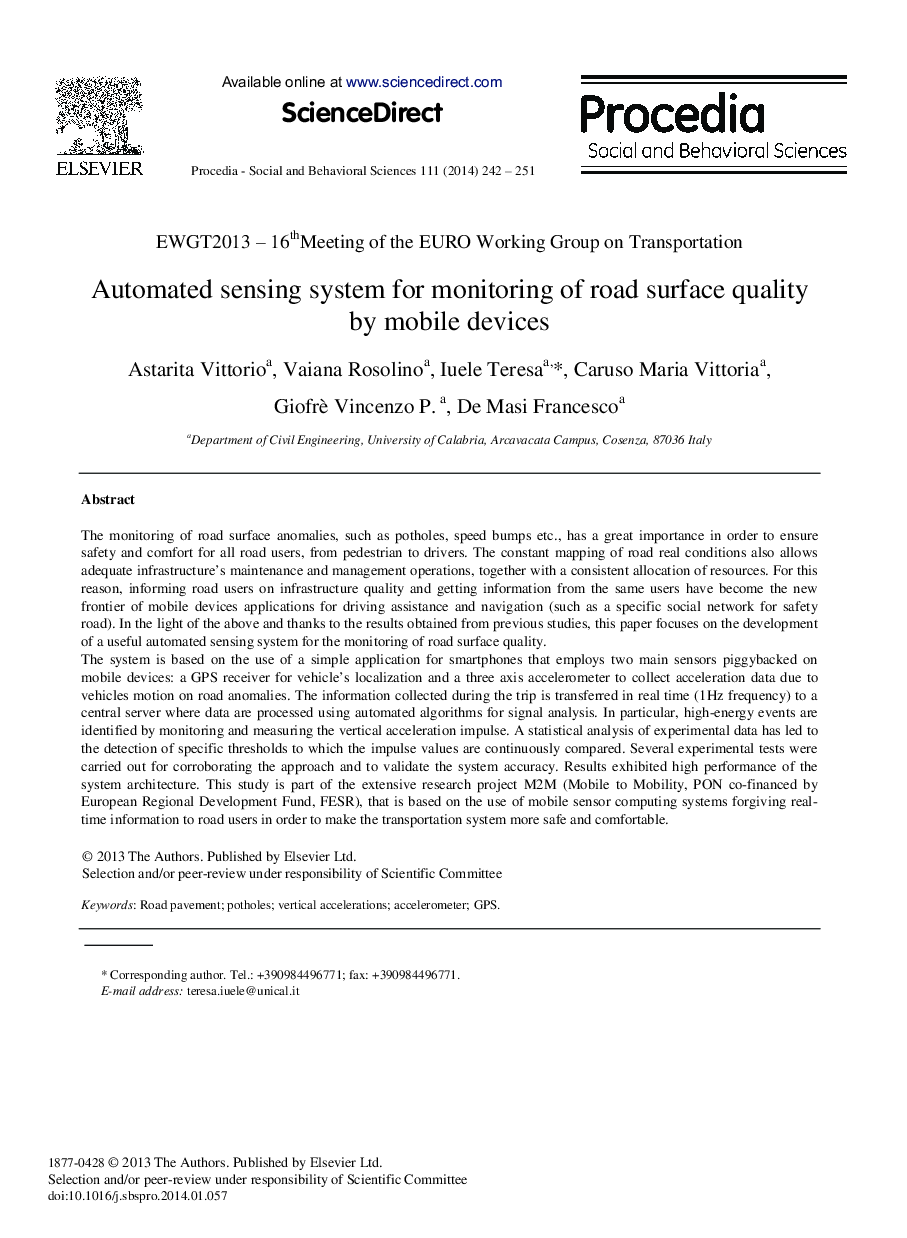| Article ID | Journal | Published Year | Pages | File Type |
|---|---|---|---|---|
| 1115910 | Procedia - Social and Behavioral Sciences | 2014 | 10 Pages |
The monitoring of road surface anomalies, such as potholes, speed bumps etc., has a great importance in order to ensure safety and comfort for all road users, from pedestrian to drivers. The constant mapping of road real conditions also allows adequate infrastructure's maintenance and management operations, together with a consistent allocation of resources. For this reason, informing road users on infrastructure quality and getting information from the same users have become the new frontier of mobile devices applications for driving assistance and navigation (such as a specific social network for safety road). In the light of the above and thanks to the results obtained from previous studies, this paper focuses on the development of a useful automated sensing system for the monitoring of road surface quality.The system is based on the use of a simple application for smartphones that employs two main sensors piggybacked on mobile devices: a GPS receiver for vehicle's localization and a three axis accelerometer to collect acceleration data due to vehicles motion on road anomalies. The information collected during the trip is transferred in real time (1 Hz frequency) to a central server where data are processed using automated algorithms for signal analysis. In particular, high-energy events are identified by monitoring and measuring the vertical acceleration impulse. A statistical analysis of experimental data has led to the detection of specific thresholds to which the impulse values are continuously compared. Several experimental tests were carried out for corroborating the approach and to validate the system accuracy. Results exhibited high performance of the system architecture. This study is part of the extensive research project M2 M (Mobile to Mobility, PON co-financed by European Regional Development Fund, FESR), that is based on the use of mobile sensor computing systems forgiving real- time information to road users in order to make the transportation system more safe and comfortable.
